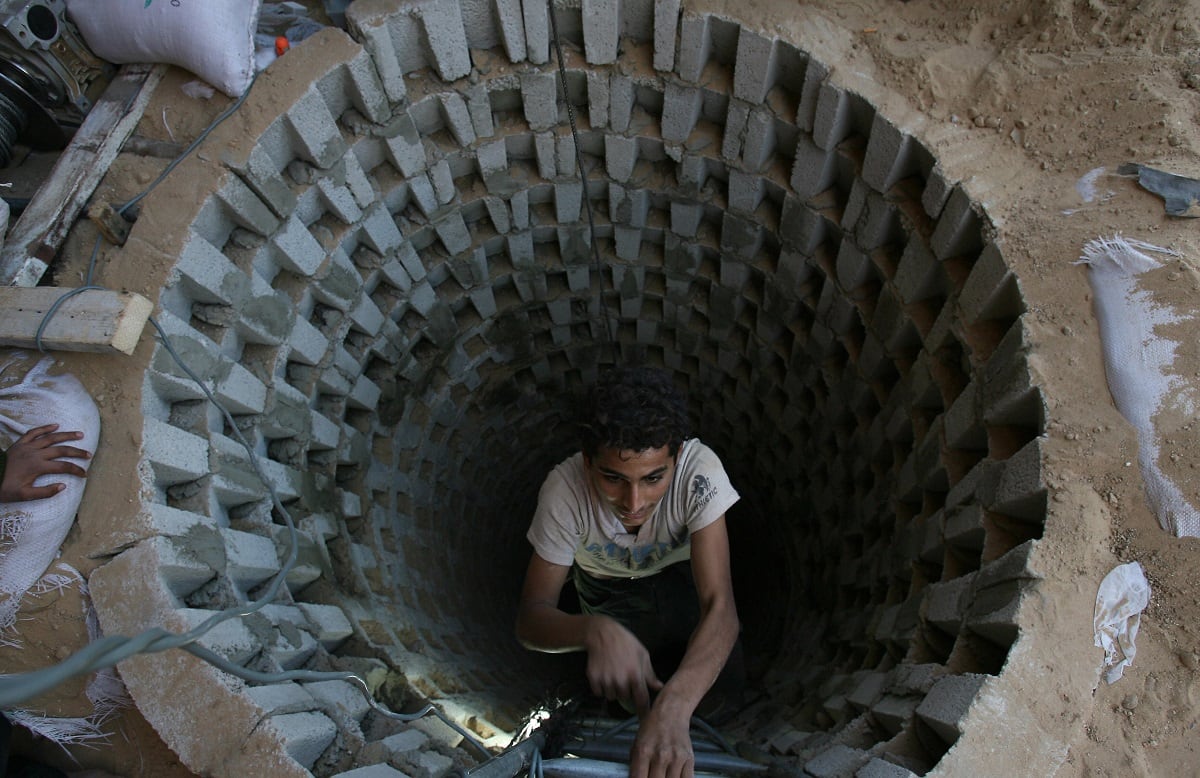JERUSALEM ― Israel’s first-time activation of its David’s Sling Weapon System could serve as the catalyst for export marketing efforts.
The missile defense system was fired July 23 to counter a missile threat. It launched two interceptors to counter two SS-21 ballistic missiles that had been fired by Syrian government forces during fighting against rebels near the Golan Heights. The Syrian missiles fell within Syrian territory. One of the interceptors self-destructed over the Golan Heights.
According to The Jerusalem Post, the event is being investigated to determine if the system operated successfully.
With Iron Dome shown to be successful and an Arrow missile used to down a Syrian surface-to-air missile in March 2017, all the layers of Israel’s advanced missile defense have been put to use.
David’s Sling was co-developed by Raytheon and Israel’s Rafael Advanced Defense Systems. Raytheon was chosen in 2004 as a partner by Israel’s Ministry of Defense, and the company worked to develop the system’s Stunner interceptor missile, which is designed to intercept missiles, drones, aircraft and other ordnance. In contrast to Israel’s Iron Dome system and its Tamir missiles, the Stunner uses hit-to-kill technology, which is designed to maneuver and strike an incoming threat, rather than detonate in proximity to it.
The first-time use of David’s Sling may increase the ability to sell and export the system if it can be shown to be successful. Recently, Rafael signed a cooperation agreement with Romania that involves Iron Dome, which could potentially lead to more sales. Ballistic missile threats launched by Houthi rebels in Yemen at Saudi Arabia, as well as uncertainty on the Korean Peninsula, offer other potential markets.
David’s Sling includes an active electronically scanned array, multimission radar, which works to identify an incoming threat, target and guide the interception. The radar was designed by Elta Systems, a subsidiary of Israel Aerospace Industries. Elisra, a subdivision of Elbit, developed the command-and-control components.
The system was tested to confront groups of threats that might emerge, such as a salvo of rockets and ballistic missiles. In May, 20 Iranian Grad and Fajr rockets were fired at Israel from Syria and intercepted by Iron Dome.
The David’s Sling was designed to be one part of Israel’s expanding multilayered missile defense. Operating at longer ranges than the Iron Dome, it is designed to confront medium-range threats from 40-155 miles, while the Arrow confronts longer-range threats.
Israel is eyeing a new 10-year, $8 billion plan to bolster its missile defenses. According to Raytheon, “teams in nearly 30 U.S. states across the U.S. are dedicated to producing the [David’s Sling] missile and its firing unit.”
The system was tested five times between 2012 and January 2017 before being declared fully operational in April 2017. It was initially developed to counter threats from Hezbollah’s arsenal, including the Zelzal, the Iranian Fajr-5 and Fateh 110, and Syria’s M600, as well as Scud missiles.
Hezbollah’s rockets had fallen on Israel with impunity in the 2006 conflict, and Israel’s Defense Ministry indicated in 2013 that it had high hopes for David’s Sling to give Israel the ability to “deal with threats with far higher efficiency.”
However, after the Syrian civil war broke out in 2011, Israel became concerned about a potential Iran-backed threat emerging in Syria as well as other missile threats launched by additional groups in the region amid the instability of the last several years.
RELATED

A month of interceptions
The July 23 incident came amid fighting in southern Syria. In late June, the Syrian regime launched a major offensive against Syrian rebels, and by mid-July the rebels and Islamic State militants were occupying an area near the Golan Heights and the 1974 cease-fire line between Israeli and Syrian forces.
On July 11, Israel used a Patriot missile to shoot down a drone from Syria that flew six miles over the cease-fire line. Patriot was again used to shoot down a second drone July 13, and yet again to target a Syrian warplane on July 24.
On the morning of July 23, David’s Sling detected two incoming SS-21 Tochka ballistic missiles. The SS-21 has a range of 100 miles and it was projected to fall within Israel near the Sea of Galilee, six miles from the cease-fire line. After the interceptors were launched, the system determined the SS-21 would fall in Syria, and so one interceptor was programmed to self-destruct while the other fell in Syria.
The use of the system comes four months after members of Congress sought $705.8 million in funding for U.S.-Israel cooperation on missile defense, including David’s Sling, Arrow and the Iron Dome. Of that, $183 million was destined for David’s Sling, the latest in $1.39 billion that the U.S. has contributed, according to the Congressional Research Service.
The current funding will go toward upgrades, such as “extending the system’s range, improving its seeker capabilities and addressing cruise missile threats,” according to a statement from the office of Rep. Peter Roskam, R-Ill., who co-chairs the House Republican Israel Caucus.
Seth J. Frantzman is the Israel correspondent for Defense News. He has covered conflict in the Mideast since 2010 for different publications. He has experience covering the international coalition against the Islamic State group in Iraq and Syria, and he is a co-founder and executive director of the Middle East Center for Reporting and Analysis.








